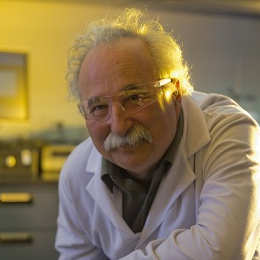Feature Paper on Magnetic Nanospecies—Educational Aspects
A special issue of Magnetochemistry (ISSN 2312-7481). This special issue belongs to the section "Magnetic Nanospecies".
Deadline for manuscript submissions: closed (31 December 2023) | Viewed by 1546
Special Issue Editor
Interests: bioelectronics; bionanotechnology; bioelectrochemistry; biosensors; self-assembling enzymes; monolayers; modified electrodes
Special Issues, Collections and Topics in MDPI journals
Special Issue Information
Dear Colleagues,
The recent progress in nanotechnology, particularly with the use of magnetic materials, has resulted in a huge number of publications on the preparation, characterization, and application of magnetic nanospecies. The vast majority of the published papers address very specific, narrow studies. There are many review articles summarizing the most recent advances in the area. The present issue will be organized in a novel way and is addressed to young researchers and students. We accept methodological papers, educational reviews, and short summaries introducing the readers to the topic. We plan to have a collection of papers that will be useful for undergraduate and graduate courses, as well. Notably, there is a high demand for textbooks and teaching materials that are useful for students. The present Special Issue plans to address this demand and to fill the “hole” in the available reading/studying materials. Therefore, the invited papers should NOT be concentrated on narrow and very specific research results; rather, they should describe broad fundamental issues written in a way that is easy for students to read. Some of the papers may address the historic aspects of the developments in the area of magneto-chemistry and magneto-nanotechnology. Since this is a novel way of organizing Special Issues, we expect great success for and attention given to the issue. Finally, we are planning to format the Special Issue as an electronic book which is freely available to classes related to nanotechnology, biotechnology, etc., with the use of magnetic nanospecies. All your educational contributions are very welcome to this Special Issue. Overall, the present educational Special Issue will be very unique, rather unusual, and highly interesting. Your enthusiastic support will be highly important for the success of our idea.
Prof. Dr. Evgeny Katz
Guest Editor
Manuscript Submission Information
Manuscripts should be submitted online at www.mdpi.com by registering and logging in to this website. Once you are registered, click here to go to the submission form. Manuscripts can be submitted until the deadline. All submissions that pass pre-check are peer-reviewed. Accepted papers will be published continuously in the journal (as soon as accepted) and will be listed together on the special issue website. Research articles, review articles as well as short communications are invited. For planned papers, a title and short abstract (about 100 words) can be sent to the Editorial Office for announcement on this website.
Submitted manuscripts should not have been published previously, nor be under consideration for publication elsewhere (except conference proceedings papers). All manuscripts are thoroughly refereed through a single-blind peer-review process. A guide for authors and other relevant information for submission of manuscripts is available on the Instructions for Authors page. Magnetochemistry is an international peer-reviewed open access monthly journal published by MDPI.
Please visit the Instructions for Authors page before submitting a manuscript. The Article Processing Charge (APC) for publication in this open access journal is 2700 CHF (Swiss Francs). Submitted papers should be well formatted and use good English. Authors may use MDPI's English editing service prior to publication or during author revisions.
Keywords
- magnetic nanoparticles
- magnetic nanowires
- magnetic nanomaterials
- magnetic biosensors
- educational aspects





